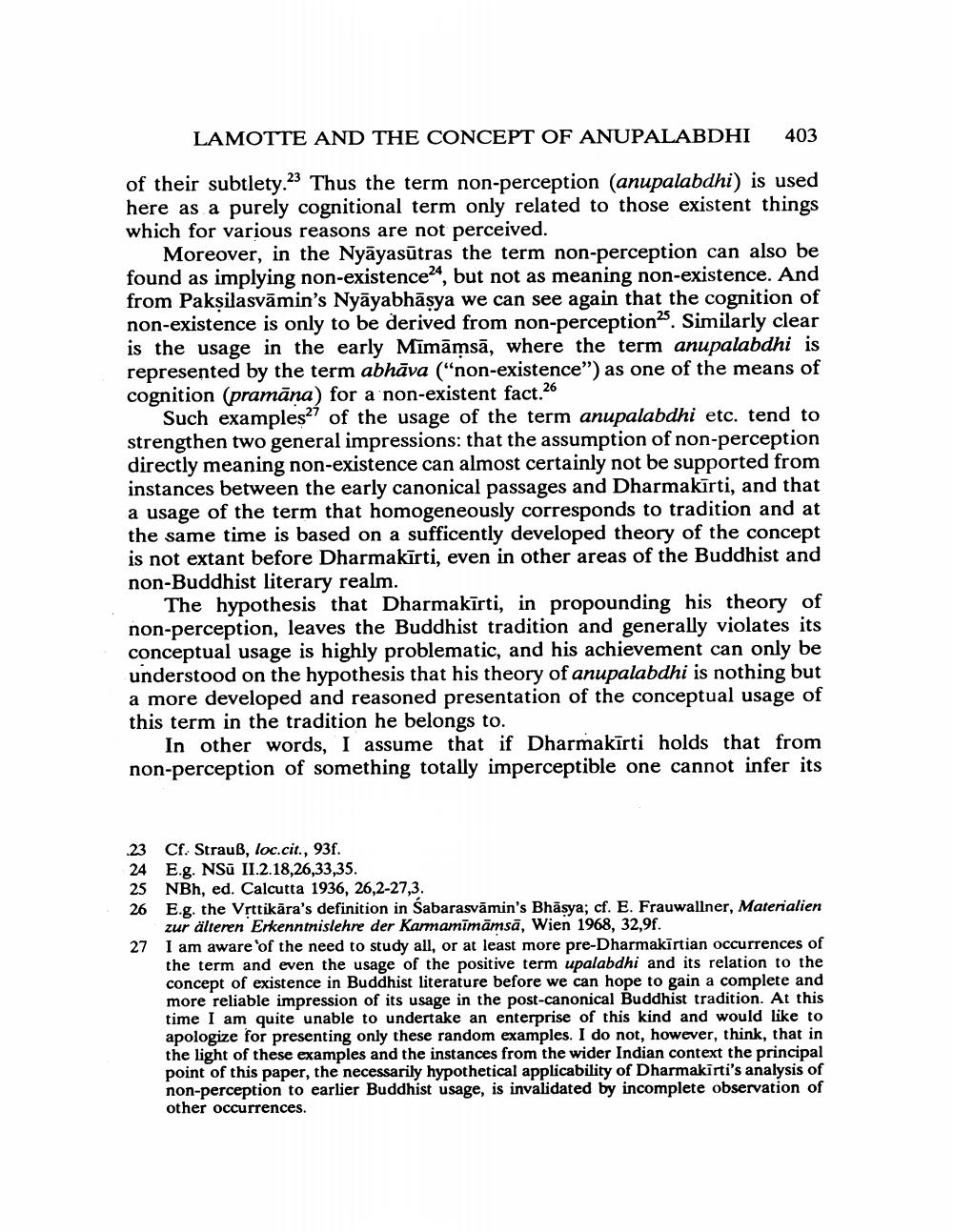Book Title: Lamotte And Concept Of Anupalabdhi Author(s): Ernst Steinkellner Publisher: Ernst Steinkellner View full book textPage 6
________________ LAMOTTE AND THE CONCEPT OF ANUPALABDHI 403 of their subtlety.23 Thus the term non-perception (anupalabdhi) is used here as a purely cognitional term only related to those existent things which for various reasons are not perceived. Moreover, in the Nyāyasūtras the term non-perception can also be found as implying non-existence24, but not as meaning non-existence. And from Paksilasvāmin's Nyāyabhāsya we can see again that the cognition of non-existence is only to be derived from non-perception?. Similarly clear is the usage in the early Mīmāmsā, where the term anupalabdhi is represented by the term abhāva ("non-existence") as one of the means of cognition (pramāna) for a non-existent fact.26 Such examples27 of the usage of the term anupalabdhi etc. tend to strengthen two general impressions: that the assumption of non-perception directly meaning non-existence can almost certainly not be supported from instances between the early canonical passages and Dharmakīrti, and that a usage of the term that homogeneously corresponds to tradition and at the same time is based on a sufficently developed theory of the concept is not extant before Dharmakīrti, even in other areas of the Buddhist and non-Buddhist literary realm. The hypothesis that Dharmakīrti, in propounding his theory of non-perception, leaves the Buddhist tradition and generally violates its conceptual usage is highly problematic, and his achievement can only be understood on the hypothesis that his theory of anupalabdhi is nothing but a more developed and reasoned presentation of the conceptual usage of this term in the tradition he belongs to. In other words, I assume that if Dharmakīrti holds that from non-perception of something totally imperceptible one cannot infer its 23 24 25 26 Cf. Strauß, loc.cit., 93f. E.g. NSū II.2.18,26,33,35. NBh, ed. Calcutta 1936, 26,2-27,3. E.g. the Vrttikāra's definition in Sabarasvāmin's Bhāsya; cf. E. Frauwallner, Materialien zur älteren Erkenntnislehre der Karmamīmāmsā, Wien 1968, 32,9f. I am aware of the need to study all, or at least more pre-Dharmakīrtian occurrences of the term and even the usage of the positive term upalabdhi and its relation to the concept of existence in Buddhist literature before we can hope to gain a complete and more reliable impression of its usage in the post-canonical Buddhist tradition. At this time I am quite unable to undertake an enterprise of this kind and would like to apologize for presenting only these random examples. I do not, however, think, that in the light of these examples and the instances from the wider Indian context the principal point of this paper, the necessarily hypothetical applicability of Dharmakirti's analysis of non-perception to earlier Buddhist usage, is invalidated by incomplete observation of other occurrences.Page Navigation
1 ... 4 5 6 7 8 9 10 11 12 13
